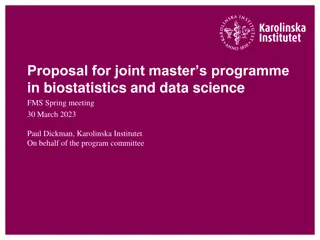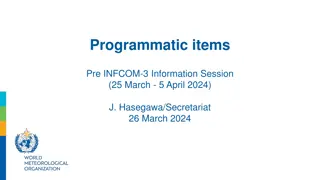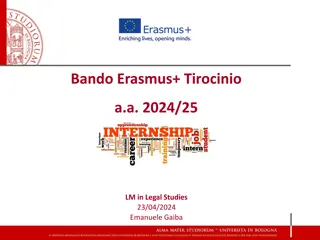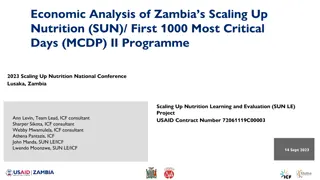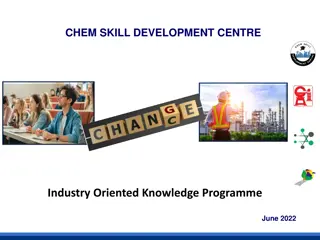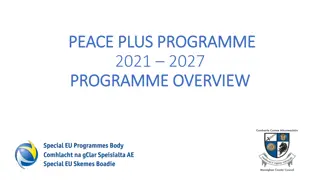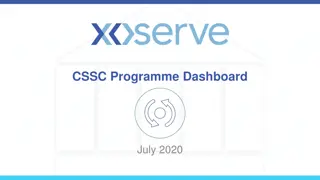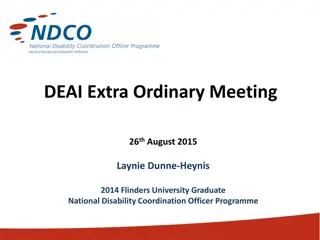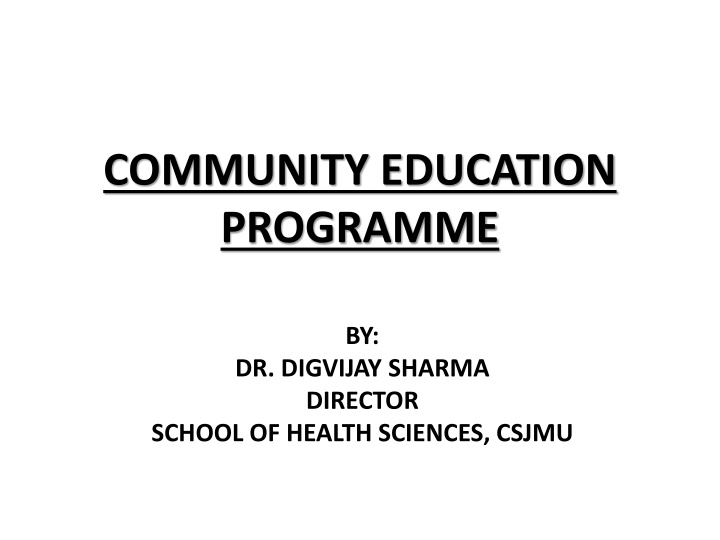
Community Education Programme Components
Learn about the essential components of community education programmes, including needs assessment, leadership, community involvement, physical facilities, participants, and instructors. Explore how these components contribute to enriching lives and strengthening communities.
Download Presentation

Please find below an Image/Link to download the presentation.
The content on the website is provided AS IS for your information and personal use only. It may not be sold, licensed, or shared on other websites without obtaining consent from the author. If you encounter any issues during the download, it is possible that the publisher has removed the file from their server.
You are allowed to download the files provided on this website for personal or commercial use, subject to the condition that they are used lawfully. All files are the property of their respective owners.
The content on the website is provided AS IS for your information and personal use only. It may not be sold, licensed, or shared on other websites without obtaining consent from the author.
E N D
Presentation Transcript
COMMUNITY EDUCATION PROGRAMME BY: DR. DIGVIJAY SHARMA DIRECTOR SCHOOL OF HEALTH SCIENCES, CSJMU
COMMUNITY EDUCATION It is a process designed to enrich the lives of individuals, groups, and their communities by engaging with people who share common interests, goals, traditions, or geography, to develop a range of learning, action and reflection opportunities, determined by personal, social, economic and political needs. Community education is on the threshold of a major breakthrough. Community Education is all about advocating for the creation of multiple educational and learning services and programs to support community members and strengthen their communities.
COMMUNITY EDUCATION PROGRAM Programs are the most basic and most popular form of participation in community education activities. From the perspective of the community, programs are community education. Community education can be defined on two levels. First is a single program, a structured and regularly scheduled activity in which individuals participate, based on interest, perceived need, or desire. On another level, a community education program is the sum of all community education activities, the purposes of which may be educational, recreational, vocational, or social.
COMPONENTS Needs Assessment- Community education programs should be based on some form of needs assessment. It may be as formal as a comprehensive community survey or as informal as a small-group discussion. Sometimes new data are collected; other times existing data are reviewed from fresh or different perspectives. Leadership- The development and management of community education programs require administrative leadership by an individual commonly identified as the Director of Community Education or Community School Director. This person's functions include program design based on needs assessment, program scheduling, staffing, and evaluation. Community Involvement- Successful community education programs involve citizens in roles other than as program participants. In many places community education councils have been established to advise administrators on program and management issues or to participate directly in program development decisions. Physical Facilities- Community education programs require accessible and adaptable facilities.
COMPONENTS Participants- Obviously, without participants there would be no programs; and participants can be as diverse as the population in the community - from toddlers as young as age two to the elderly. Because of the nature of specific programs, participants usually represent homogeneous age groupings. Increasingly, however, family-centered programs and intergenerational activities are provided. Instructors/Leaders- Like most educational programs, community education programs involve instructors or leaders. They may be paid or volunteers, certified teachers or local artists. The credentials needed are experience and expertise in the program area .
STEPS IN PROGRAM DEVELOPMENT ASSESSMENT PLANNING IMPLEMENTATION EVALUATION RE-ASSESSMENT


